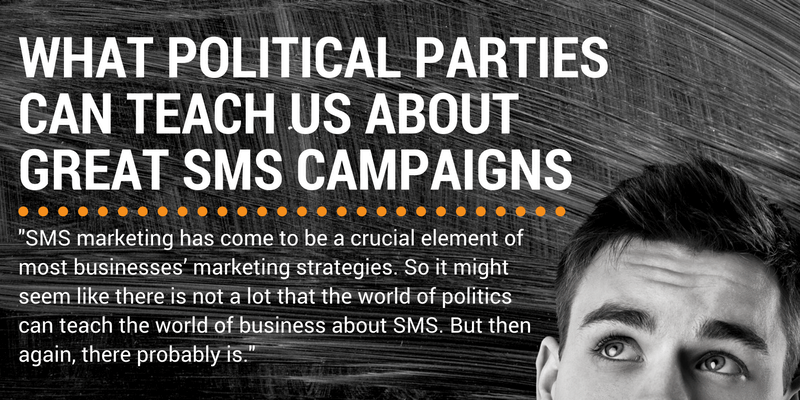Business SMS Marketing: Striking the Right Tone

Tone of voice is important in all business communications, from letters to direct mail campaigns. The way you speak to clients is all of a part of the image you create in their minds of your brand. As short as they are, this also applies to business text messaging. It may even be more important to get the language and tone right in your messages, particularly your SMS marketing, than in an emailed leaflet for two reasons. First, you have only a very brief number of words to get your message across. And second, text messages have a rapid impact, with recipients typically reading texts within three minutes of receiving one. SMS strategies need to focus on sending personalised and engaging messages.
SMS is for business as well as promotions
Text messages are also a more efficient way of communicating directly with a customer. Calls from unknown numbers are often ignored, voicemail isn’t listened to, and emails may end up in a junk filter. Text messages even from unknown numbers are harmless and so are usually immediately opened. If you need more information on an address or want to let them know that your hours have changed, for example, a text message will do the job more effectively.
It is OK to use text speak
Many businesses are surprised to find that there is no hard and fast rule against the use of text speak in SMS messages. In fact, this varies depending on your individual business. The language you use has to match your audience. Only you have a good understanding of your customer demographic. Some popular text terms that are business safe include FYI, ASAP, AFAIC and TIA. These are: for your information, as soon as possible, as far as I’m concerned, and thanks in advance.
The key is to use text speak in context. FYI and ASAP, for example, have been used as abbreviations in informal business communications since long before we started text messaging. In some situations, such as with food or fashion retail offers, using text speak like U instead of you, and 8 in place of any ‘eight’ sound (like gr8 for great) will add more energy to your message.
But most of the time you shouldn’t
If you don’t sell pizza, teen fashion, or sports shoes, you probably shouldn’t get too informal with your messages. For most business purposes, perfect grammar and punctuation is still essential. Text language like LOL is too informal and can lead to confusion as those unfamiliar with the terms might read it as ‘lots of love’ instead of ‘laugh out loud’. Keep language clear and concise. Where you have a choice use the word that has the least amount of letters.
Plain English and jargon
If it is jargon that is so commonly used in your line of business or industry, then always make sure you use it. It’s more succinct and gives your text message an instant authoritative tone of voice. The message this conveys is that you know what you are talking about. There is a point at which jargon becomes a hindrance. If terms aren’t as widely known, your message may be lost or ignored. If in doubt, always use plain English for clarity.
Are emojis or emoticons acceptable?
Emojis or emoticons are little icons you can create to convey emotions, using symbols on your keypad such as the colon, and brackets. The most well-known emoji is the smiley face, created using a : and a ) to make :). One big problem with text messages for businesses is that they contain no indication of the intent or the emotion of the sender, and are often read with a colder and harsher voice than the sender intended. Emojis evolved to help convey those emotions in a text message. A smiley face indicates the message is friendly.
If you are communicating directly with a client via text message, or you want to send out a short informal text message to your entire customer base, an emoji can be acceptable. But with caveats. Only use one if you are concerned your tone or message could be misinterpreted. And only use the smiley face and the downwards unsmiling face, and for smartphones the thumbs up and the chin stroking ‘maybe’ face. The simple reason for this is that each smartphone operating system uses a different style of emoji. Something like the grinning face emoji can look so different on iPhones and Android phones that it can convey a completely different emotion. And never use negative emojis.
More than one tone of voice
Don’t just set your business one tone of voice. Just like people, your organisation will have different personalities depending on the situation, and you should be flexible enough to adjust tone of voice to suit while still staying consistent with your brand. For example, you could categorise your voice tones into serious, helpful and enthusiastic. Serious text messages may have an emphasis on grammar and use of full sentences and proper punctuation. Helpful texts might always use positive words and contain something that benefits the recipient such as information or a special offer. And with enthusiastic you might allow a more informal, silly tone to be used, that includes a little text speak or emoticons.
Different tones for different departments
The tone of voice used doesn’t just reflect your brand’s personality, but should also take into account the department or part of your organisation it is coming from. Something with more informality is appropriate from sales, but when the message is coming from the CEO you want a tone that conveys more gravitas and authority.
Text messages might form a part of your crisis management plan. And if your business doesn’t have one then it really should. Texting is a fast way to communicate with multiple stakeholders and customers in a crisis. It’s fast, and takes very little effort. It might be a product recall, or an involvement in a news story, or a natural disaster. Here it is important to ensure that there is no room for misinterpretation so only make statements of fact.
Related Articles
Proof SMS Messaging Gets Results: Business Growth
Can something as simple as adding SMS messaging propel your business to higher levels than you thought possible? That’s what happened to these two companies. Read the last blog in the Results series to see what happened, and how you can start growing your business too.
How To Craft The Best Content For Your SMS Messaging
You need concise, memorable and high-impact content with a clear call to action in your SMS messaging. That, in a nutshell, is what's needed to achieve with any marketing or engagement communications in any form. But this is never truer than with an SMS campaign when your business text messaging has to rely on a small window of recipient attention.
Boosting Ecommerce with SMS Marketing
Whilst some businesses still offer physical sales, many companies have an online presence as well. Whether they trade solely on the internet or maintain physical stores, it’s vital for businesses to cater for online customers. In order to increase sales and turnover, companies rely on a range of marketing methods, such as offline advertising or digital promotions. Whilst these can be effective, many businesses are overlooking the potential of SMS marketing.
How to Have Your SMS Messaging Pay for Itself
SMS messaging supports all sorts of use cases. Most of the time, businesses consider it an expense. But for some businesses, there's a method that could turn that expense into income. See some examples of how it works, and if it might be for you in this blog.
What Political Parties Can Teach Us About Great SMS Campaigns
SMS marketing has come to be a crucial element of most businesses’ marketing strategies, and there is plenty of received wisdom within the marketing world as to how to get the most out of your SMS messages. So it might seem like there is not a lot that the world of politics can teach the world of business about SMS. But then again, there probably is.
SMS Campaign Strategies Your Customers Will Thank You For
SMS marketing is defined by the use of text messaging to convey deals, offers or information to customers. When it's used properly, SMS is a high-return and low-cost marketing method with the ability to provide your business with a stable and effective platform for reaching customers. The main goal of an SMS campaign is a conversion; you want the recipient to perform an action as a result of reading the text message, so it's important to know what your customers will most appreciate. For a truly effective SMS marketing campaign, simply follow a few customer-centric guidelines.
How SMEs can use SMS in their Business Marketing
As a small to medium-sized enterprise, you will always be looking for ways of expanding your marketing outreach and public relations efforts without too much additional cost to your company. Chances are your budget is tight and you are limited in the extent in which you can advertise too. That's where SMS comes in.
Estate Agents: Sell More Properties with SMS Marketing
If you're an estate agent who isn't using SMS to increase their database of buyers and sellers, then you're an estate agent who isn't maximising their clients' phone numbers. A mobile number is something your purchasers and sellers are quite happy to share with you, and this voluntary opt-in can be invaluable when it comes to getting an edge in a competitive market. Using this information, you can create effective and affordable marketing campaigns, whether you’re alerting your clients to a change of price or promoting a particular property.
Gathering Data with SMS Marketing
9 Reasons SMS Marketing is Far From Finished
With all the evidence indicating that text messaging still has plenty of life left in it, here are 9 reasons why SMS Marketing still has lots to offer. Don't miss out on what SMS marketing can bring to your business.












